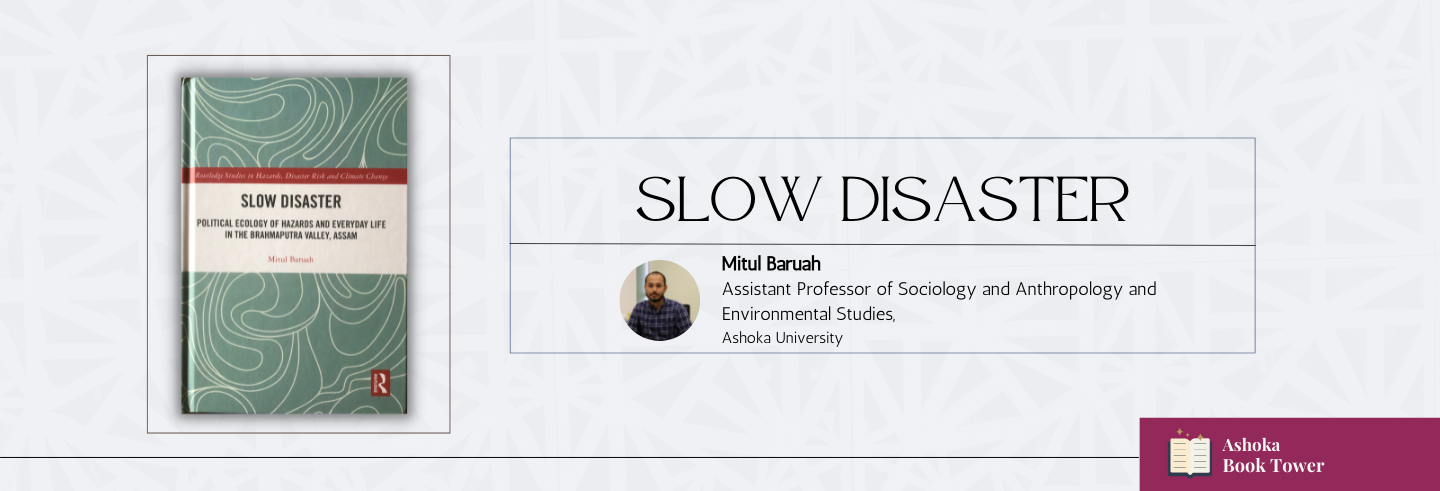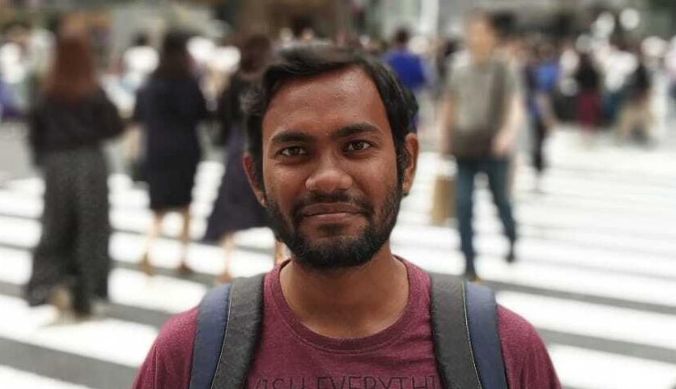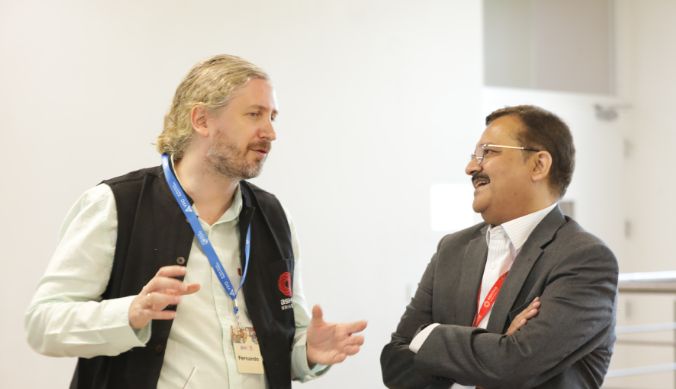#AshokaBookTower – The Disastrous State
This is an excerpt from 'Slow Disaster: Political Ecology of Hazards and Everyday Life in the Brahmaputra Valley, Assam', published by Routledge London. Excerpted with permission from the author

Mitul Baruah
13 September, 2022 | 4m readThe crisis consists precisely in the fact that the old is dying and the new cannot be born; in this interregnum, a great variety of morbid symptoms appear.
― Antonio Gramsci, Selections from the Prison Notebooks, 1971: 276
The concept of progress is to be grounded in the idea of the catastrophe. That things “just go on” is the catastrophe. It is not that which is approaching but that which is.
― Walter Benjamin, Central Park, 1985 [1939]: 50
The Brahmaputra flowed barely a hundred meters away from Mrigen Kutum’s house in Sumoimari, yet one could hardly see the mighty river from Kutum’s sotal (the front yard). What was abundantly visible instead were a boulder spur, geo-bags and geo-mattresses, and rows of RCC porcupines. Also present between his home and the river was a fleet of tractors, JCB excavators, dumper trucks, and rollers deployed by a Brahmaputra Board contractor. Referring to this sight, Kutum remarked: “Sometimes, the whole surrounding looks unrecognizable. The river looks like a heavily bandaged wound.” Most Sumoimari households are located on the riverside, that is, outside the embankment, while a small section is in the countryside or inside the embankment. It made a huge difference as to which side of the embankment one lived, but I will return to this subject later. For septuagenarian Kutum, a lifelong resident of Sumoimari, the village has changed enormously, much of which he attributed to the flood and erosion control measures that the state has adopted over the years. Kutum was particularly critical of the embankments:
We had our best time before the mathauris (embankment) were built. Everything used to be ubhainadi (abundant): food grains, fish, and all other essentials. But ever since the embankments came up, our fields stopped receiving timely water and alluvium. This has destroyed our agriculture. The embankments have also severed our ponds and beels from the river, thus depriving them of both freshwater and fish. Moreover, floods now wreak havoc on the island, as they are mostly flash floods occurring due to embankment breaching, which was not the case earlier. Before, the floodwater used to come in gracefully and recede sooner.
Kutum’s critique of embankments came out of years of experience. He grew up in the pre-embankment era Majuli when the Brahmaputra and the Subansiri flowed through the island freely every year, nourishing its agricultural fields and replenishing the wetlands. Back then, the Tuni river, too, traversed the island vigorously, enriching biodiversity and life on the island in general. Although the embankment that runs through Sumoimari now was constructed in the mid-1990s, the village has been witnessing the impacts of embankments since the late-1950s, as the first set of embankments in Majuli had already come up by then in Ujani Majuli (upper Majuli). For Mrigen Kutum, thus, the embankments and the cognate infrastructures were more than just a set of infrastructures; they were a force that reshaped his world in front of his eyes. Hence his strong critique of these interventions. As I travelled the length and breadth of the island for fieldwork, I kept hearing stories after stories of the devastating impacts of embankments, spurs, and other such infrastructures on people’s lives and the local ecologies.
Sometimes, rural people made a very simple, yet powerful, argument to debunk the highly sophisticated world of river engineering that seemed to have dominated much of the discourses on flood control and riverbank protection. For instance, an elderly person at Sumoimari told me on one occasion: “Nadikhon bor komal. Moromere subo lage” (The river is very delicate. It should be touched with love). I was awestruck by the profundity of this statement. Unlike the world of techno-engineering, where the river is often treated like a drain that can be shifted around and constantly altered, through this simple remark, this Sumoimari resident presented an entirely different worldview: that the river is a living entity, which requires love, care, and a humane touch.
This chapter focuses on this question of the touch – that is, whether the state has indeed touched the river with love, and if not, what implications it has had on the island. Let me begin with a historical overview of flood and erosion control measures in Assam.
A brief history of flood control and riverbank protection in Assam
In Assam, “flood control” has always been top-down. Historically, the Assamese peasantry did not consider flood a calamity; instead, they welcomed and relied heavily on annual flooding for their livelihoods. The state, on the other hand, has always viewed floods as a hazard that needs to be controlled. Flood control has always been an endless pursuit, even when the outcome has often been disastrous, as the rest of this chapter will demonstrate.
(This is an excerpt from Slow Disaster: Political Ecology of Hazards and Everyday Life in the Brahmaputra Valley, Assam, published by Routledge London. Excerpted with permission from the author)













